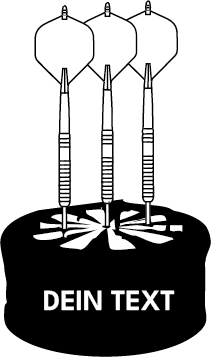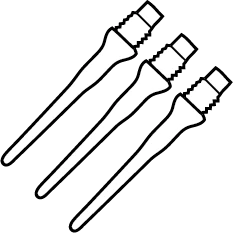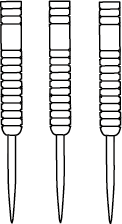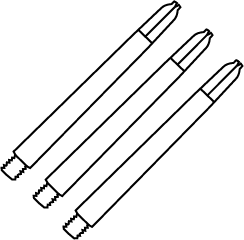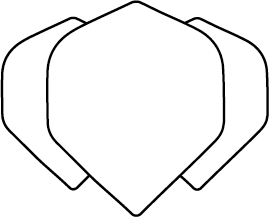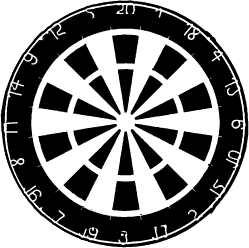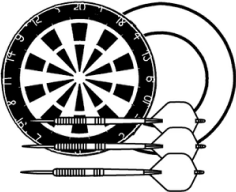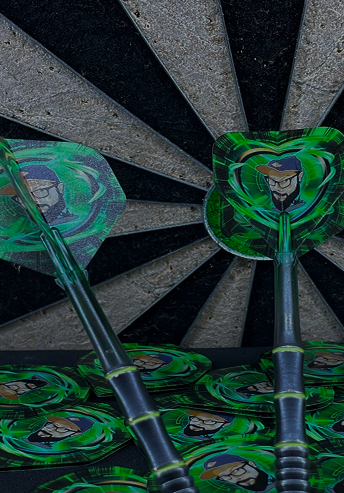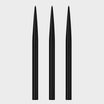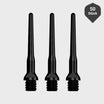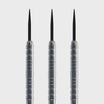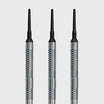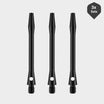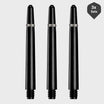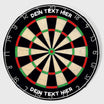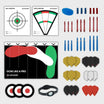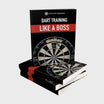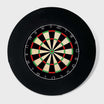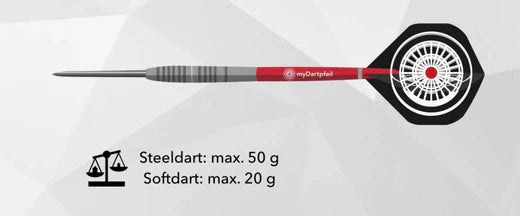In darts, players are always faced with the question of which dart weight is best suited to achieving top performance .
And just as the weights of professional darts vary, so do the answers to this question. There's no one -size-fits-all answer as to which dart weight will guarantee success.
Every player has his or her own individual preferences when playing darts and adapts the dart to his or her own needs .
In this blog post, we would like to take a closer look at how the dart is constructed and what you need to pay attention to when it comes to the total weight.
How does dart weight affect my game?
The weight of your steel tip darts will naturally affect your bull's-eye performance. Darts weighing between 23 and 25 grams are ideal for beginners . This weight is ideal for beginners.
Especially for beginners, the game can be very tiring if the steel dart weight or the e-dart weight is too high.
If you are more of an old hand , you can also use arrows weighing 26 or 27 grams .
Tip: The advantage of this is that the dart tip penetrates deeper into the board. However, heavier darts can also minimize bounces. However, you'll also need more force when releasing them.
However, the weight is made up of different parts, i.e. the dart structure , which we will discuss later.
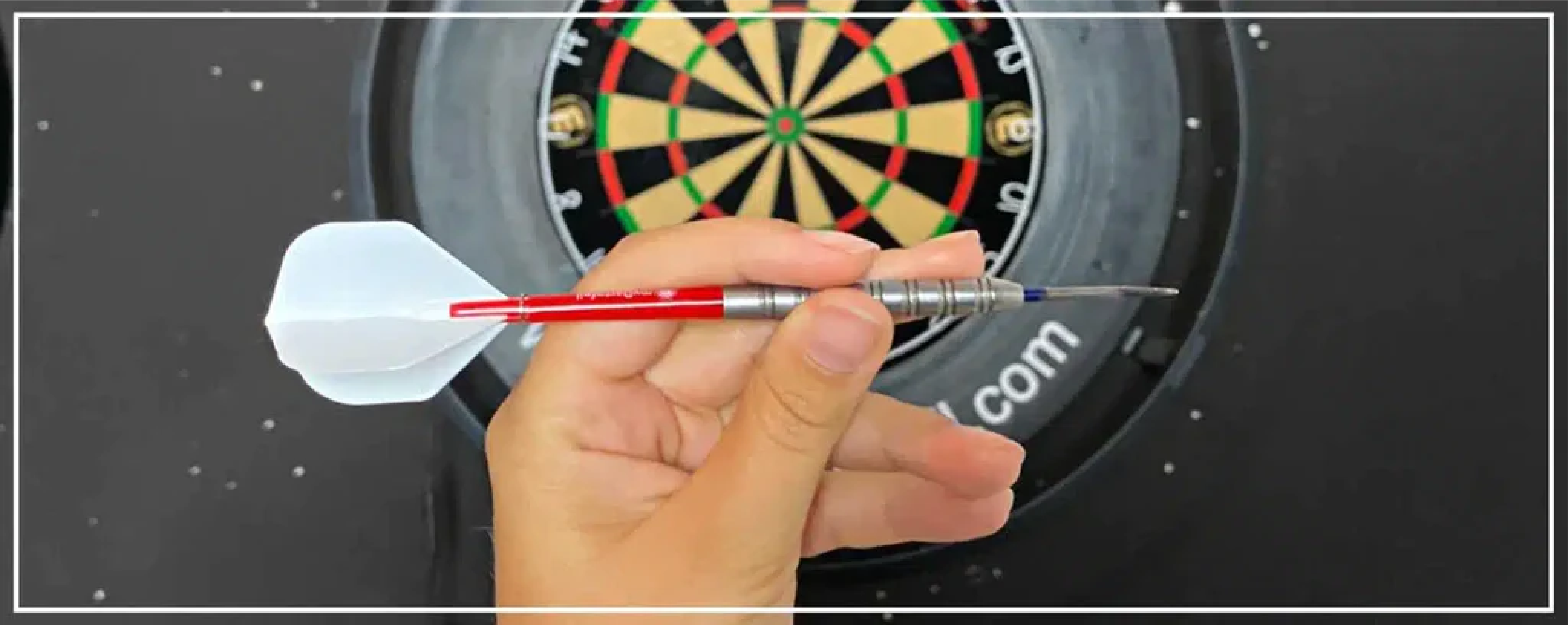
Official regulations: How heavy can a dart be?
Many people wonder how heavy a dart should be. However, it's important to distinguish between soft and steel darts . There are significant differences between these two, which we'll explain below.
Soft darts
Electronic darts are played with soft-tipped darts. All electronic darts weigh 21 grams . This limit may not be exceeded .
This is mainly due to the vending machines, which are protected by this weight, among other things, so that they do not break so quickly.
Steel darts
The steel dart weight is not specified and there is only a limit of 50 grams for the steel dart weight.
But who uses 50-gram darts? As a rule, darts heavier than 28 grams are rarely used in professional dart competitions.
Are heavy or light darts better?
This depends entirely on the player and is individual . Dart players who throw with a slow backswing are generally better served with lighter darts .
This is because you can accelerate the darts without exerting much force. However, if you have a powerful throw , meaning a larger amplitude, you should opt for a heavier dart .
However, it all depends on your personal preferences and the question is not necessarily which darts are best for beginners .
How do you weigh darts correctly?
The steel dart weight or the e-dart weight is made up of different parts , as mentioned above.
With soft darts, the barrel, tip , shaft , and flight all have a total weight . With steel darts, however, there is no total weight, only the barrel weight.
The dart can easily weigh 25.5 grams . However, if your barrel weighs 24 grams, you'll always be playing with a 24-gram steel tip dart on paper. The shape of the dart barrel also matters.
How heavy are the individual components of the dart?
Let's start this chapter with the flight. The flight has only a marginal weight , as it is usually made of plastic and serves only to stabilize the dart during flight.
The weight is ultimately limited to about 0.5-1 gram of the total weight – just a fraction.
This brings us to the next part of the dart – the shaft. The weight of the dart shaft often depends on several factors .
Firstly, the length of the shaft and secondly, the material . For example, a plastic shaft is significantly lighter than one made of aluminum or even carbon.
Depending on whether a short, medium, or long shaft is used for throwing, the weight may vary slightly . However, the total weight should not exceed 2 grams .
The main component of the dart is the barrel . The barrel plays a key role in determining the dart's weight.
Infobox: The weight of the barrel is usually between 14 and 26 grams, depending on the player's preferences.
Here, too, there are different materials and various lengths, which ultimately influence the weight. Equally important is the shape, which should suit the player's throwing style.
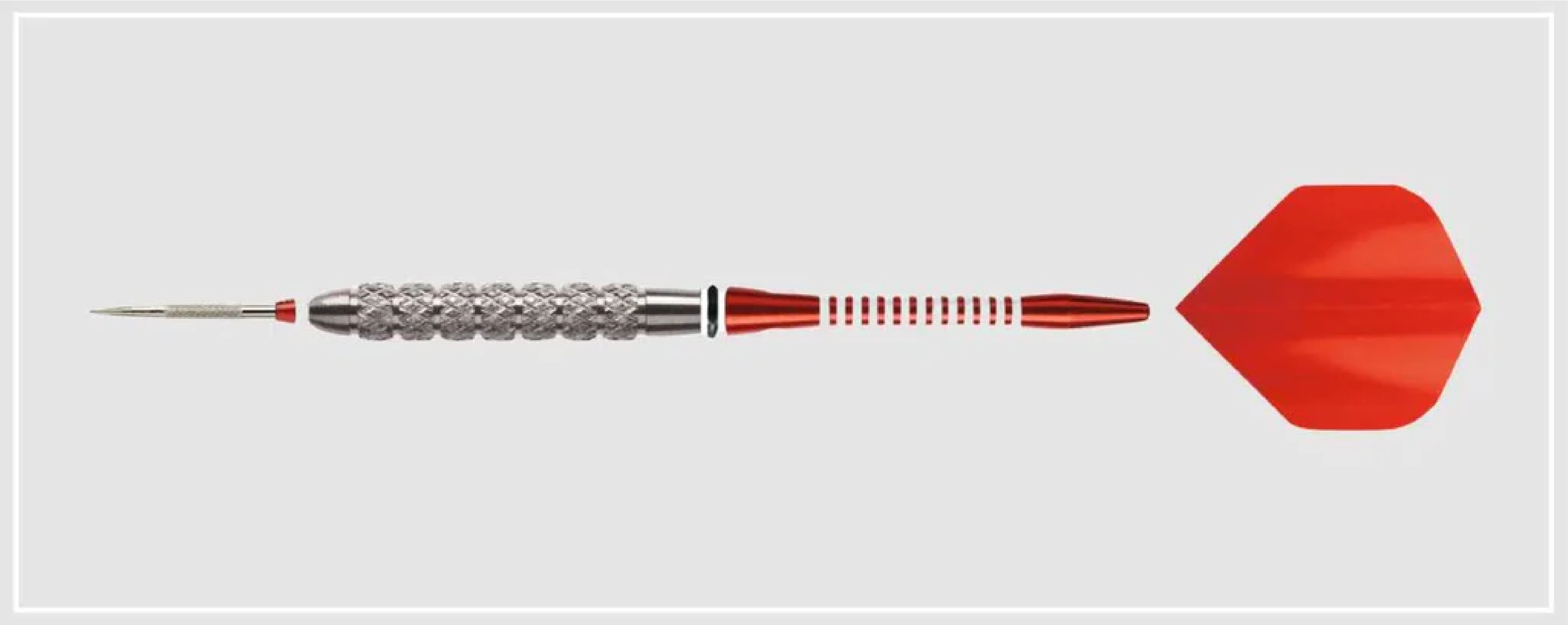
Last but not least, there's the tip. While the tip of a soft tip dart weighs only about 0.3 grams, a steel tip often weighs twice as much.
Ultimately, a dart consists of the following components . For example, if a player uses a 25-gram dart, it consists of:
- 0.5 gram tip
- 23 grams barrel
- 1 gram shaft
- 0.5 gram flight
Please note: This is an example. Depending on the material, length, weight, and shape of the materials, the individual values for a 25-gram dart may vary.
Which dart weight is suitable for beginners?
There's no such thing as the perfect dart weight . However, some recommendations can be made—especially for beginners in the sport.
It is now widely known that a complete beginner should initially use heavier arrows – that is, arrows that weigh around 23 grams or slightly more.
The reason is that heavy darts are significantly better and more stable in the air at first. This has the great advantage that newcomers to darts can initially concentrate on developing a clean throwing style.
While adults should be heavier, the opposite is true for children. More and more children find darts cool and want to emulate their parents.
It's only natural that parents wonder what weight is appropriate for their child to buy their first dart. Here, too, the rule applies: little ones should start with a lighter weight e-dart .
However, little ones should avoid steel darts at first . The dart weight, especially for beginners and children, is crucial for how long they enjoy playing.
Infobox: A heavy arrow quickly numbs your arm and is tiring. Lighter arrows, on the other hand, fly more easily, making it more fun to hit the automatic board more often.
Over time , it makes sense to reduce the weight . But this should only happen when you are absolutely sure that you have sufficiently trained and internalized your own throwing style.
Of course, there are exceptions to the rule, so it's quite possible that you have such great talent that you can handle light darts right away.
How heavy are the darts used by professionals?
Naturally, many players wonder how heavy the darts used by professionals are. This also varies and is highly individual, as everyone has their own throwing style.
How many grams does Michael Smith play?
Michael Smith uses darts with a steel tip weight of 22 grams . His weight is just slightly lower than that of van Gerwen and Anderson.
How many grams does van Gerwen play?
Michael von Gerwen only uses darts weighing around 23 grams .
How many grams does Gary Anderson play?
Like van Gerwen, Gary Anderson also only uses darts weighing around 23 grams . This shows that both of them aren't listening to what's being said and are resorting to lighter darts after a while.
Which professional has the lightest darts?
Stephen Bunting certainly uses the lightest darts. He plays his rounds with just 12 grams and is successful with them.
However, it must also be said that it is particularly strenuous and energy-sapping to concentrate on throwing such light arrows at the board for a long time.
How can I increase the dart weight?
The weight of steel darts can be increased at the barrel . There are weights available for insertion into the screw channel. Depending on the space available, you can add weight to the rear of the barrel to increase the dart weight.
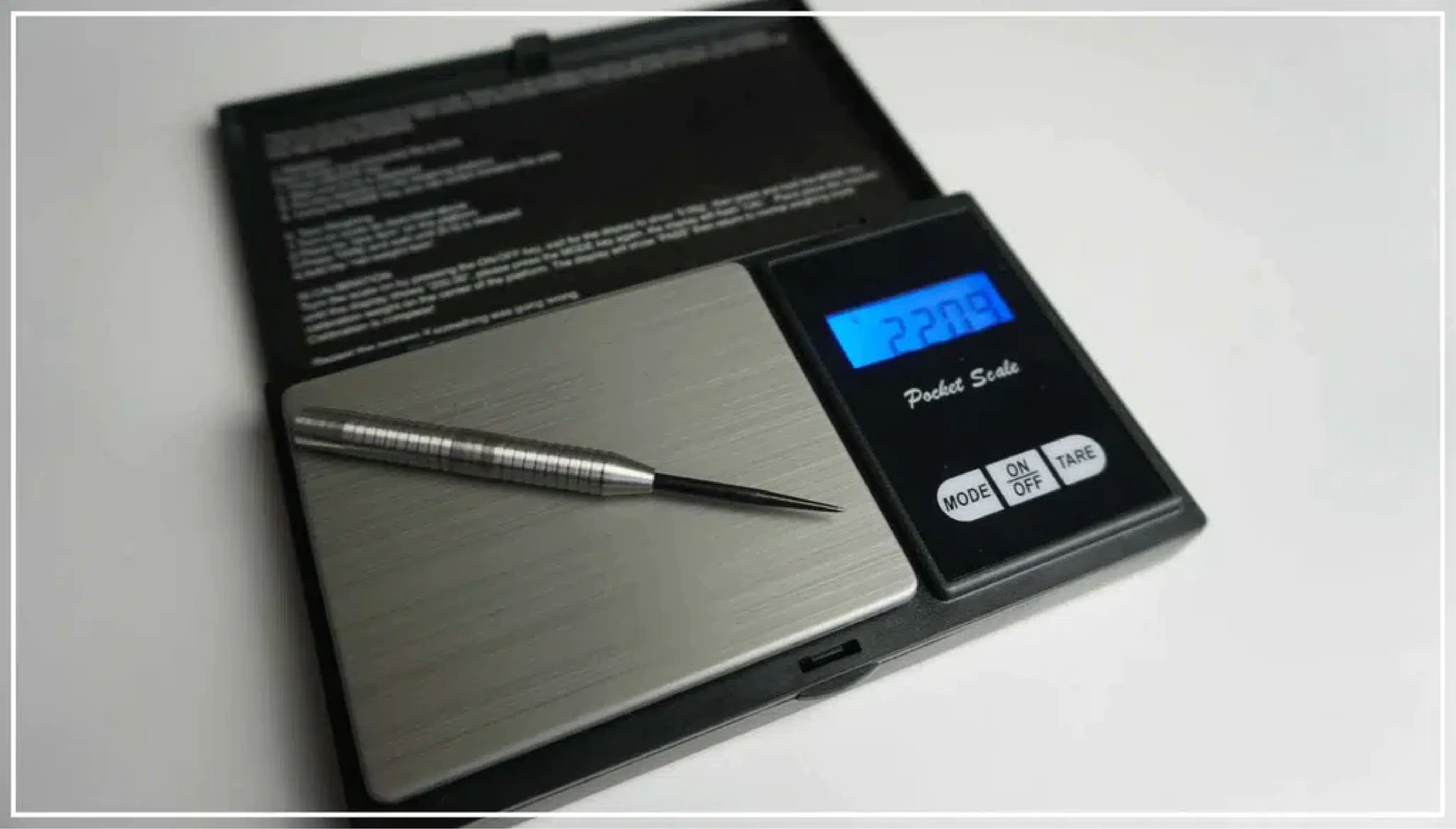
Conclusion
The entire combination is important for the dart weight. Overall, there is no general recommendation as to what weight a dart player should use.
This makes it all the more important to examine the composition closely . Two sets of darts weighing, for example, 23 grams can differ in many ways.
Be it the shape of the barrel , the dart shaft length , or other components, this clearly shows that weight is an important factor, but not a decisive factor.
So next time, pay special attention to which combination of parts gives you the best results on the dartboard .
A quick tip to finish: If possible, use darts with interchangeable tips that make them suitable for both an electronic dartboard and a steel dartboard. This will definitely make it easier for you to switch to the other type of dartboard next time without having to completely replace the darts.
Ready to upgrade your darts game? Discover everything you need to know about the best dart equipment and how it can boost your accuracy:
- The agony of choice: Dartboard made of cork or sisal ? An expert explains the pros and cons. Click here to find out more.
- Setting up a dart room Made easy thanks to cool tips and ideas » Click in now and create your own personal paradise at home.
- Changing and sharpening dart tips : Learn what's important and what you absolutely need to pay attention to here. Click here now!
Sofern nicht anders angegeben, unterliegt das im Beitrag gezeigte Bildmaterial mit Bezug zu Dartspielern und verwandten Themen dem Copyright der Professional Darts Corporation (© PDC).

